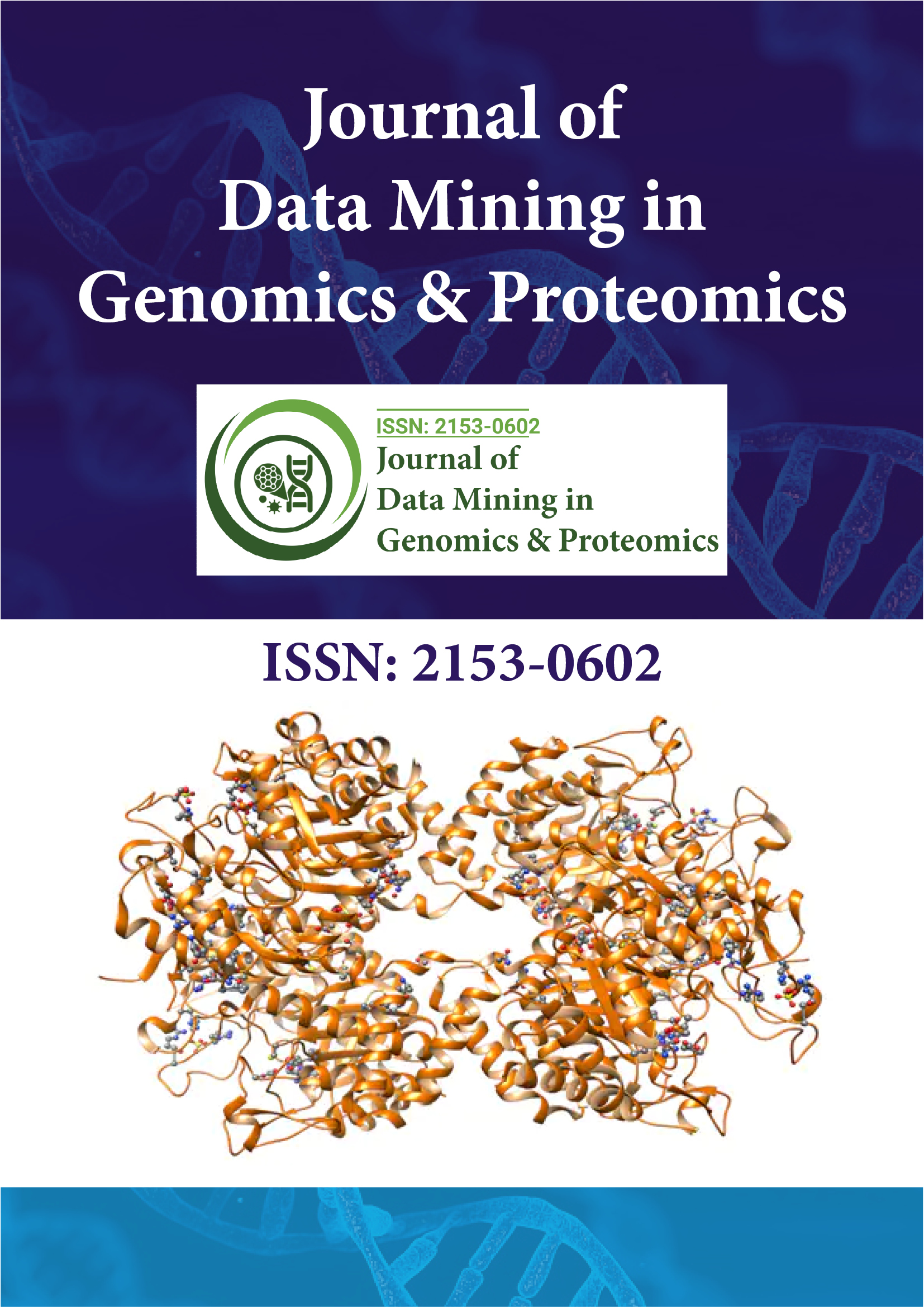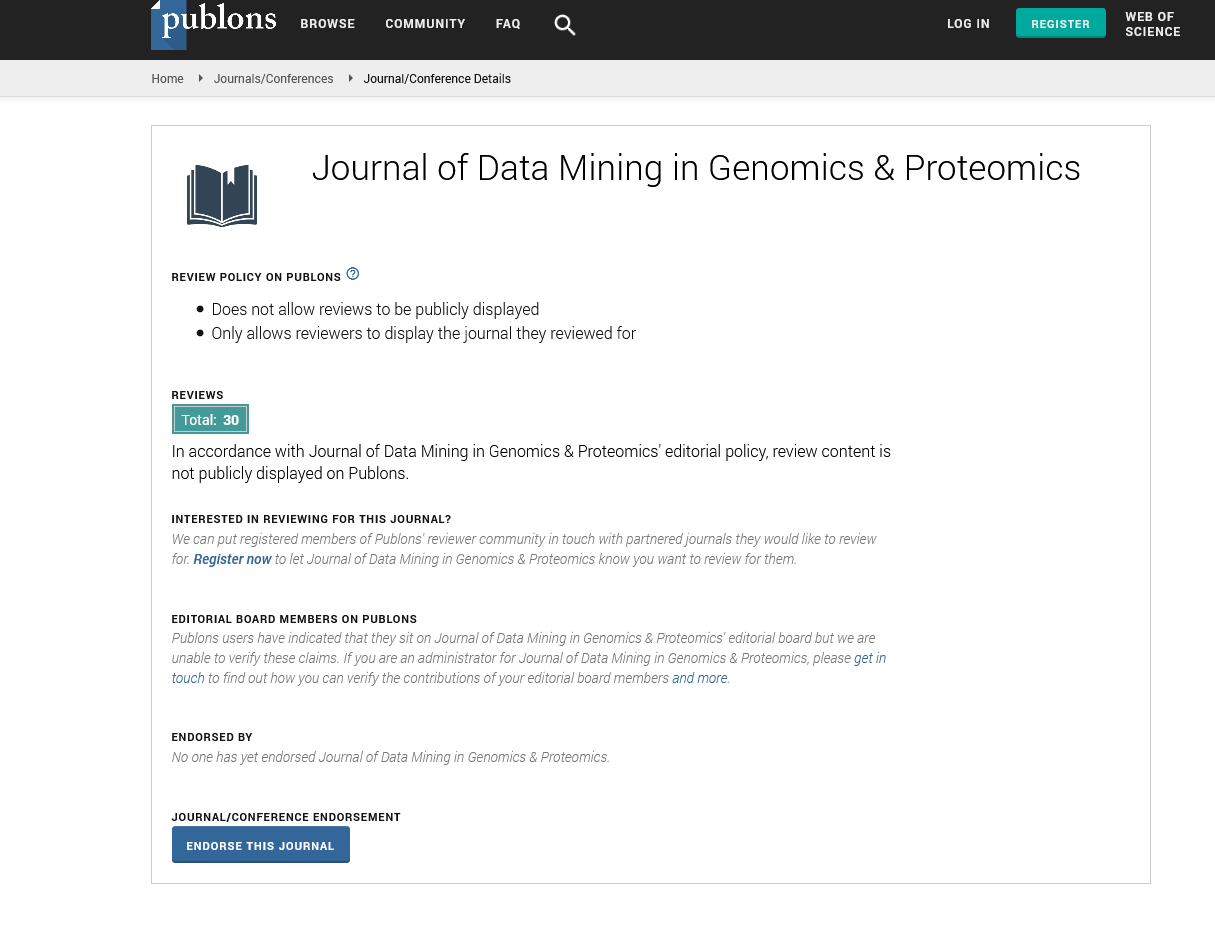PMC/PubMed Indexed Articles
Indexed In
- Academic Journals Database
- Open J Gate
- Genamics JournalSeek
- JournalTOCs
- ResearchBible
- Ulrich's Periodicals Directory
- Electronic Journals Library
- RefSeek
- Hamdard University
- EBSCO A-Z
- OCLC- WorldCat
- Scholarsteer
- SWB online catalog
- Virtual Library of Biology (vifabio)
- Publons
- MIAR
- Geneva Foundation for Medical Education and Research
- Euro Pub
- Google Scholar
Useful Links
Share This Page
Journal Flyer

Open Access Journals
- Agri and Aquaculture
- Biochemistry
- Bioinformatics & Systems Biology
- Business & Management
- Chemistry
- Clinical Sciences
- Engineering
- Food & Nutrition
- General Science
- Genetics & Molecular Biology
- Immunology & Microbiology
- Medical Sciences
- Neuroscience & Psychology
- Nursing & Health Care
- Pharmaceutical Sciences
Perspective - (2022) Volume 13, Issue 6
Genome-Wide Evaluation of Human LncRNAs Stability
Michael Johnston*Received: 04-Nov-2022, Manuscript No. JDMGP-22-18811; Editor assigned: 07-Nov-2022, Pre QC No. JDMGP-22-18811 (PQ); Reviewed: 21-Nov-2022, QC No. JDMGP-22-18811; Revised: 28-Nov-2022, Manuscript No. JDMGP-22-18811 (R); Published: 05-Dec-2022, DOI: 10.4172/2153-0602.22.13.268
Description
Tens of thousands of intragenic, intronic, and cis-antisense Long Noncoding RNAs (lncRNAs) expressed from mammalian genomes have been discovered by transcriptomics analysis. Little is understood about the post-transcriptional control of lncRNAs and their half-lives despite advancements in functional characterization. It has been presumed that lncRNAs are typically unstable even though many are easily detectable by a number of methods, but this has not been investigated genomewide. We calculated the half-lives of 800 lncRNAs and 12,000 mRNAs in the mouse Neuro-2a cell line using a proprietary noncoding RNA array. Only a small percentage of lncRNAs, we find, are unstable. LncRNA half-lives have a wide range, are comparable to mRNA half-lives but are generally shorter, suggesting complex metabolism and widespread functionality. Combining half-lives with thorough lncRNA annotations allowed researchers to find hundreds of intragenic, cis-antisense, and intronic lncRNAs that are unstable (half-life 2 h), as well as lncRNAs that are extremely stable (half-life >16 h).
Numerous biological processes are linked to transcript stability, and the variables influencing mRNA stability have been thoroughly investigated. About the characteristics of human long noncoding RNA (lncRNA) stability, however, little is known. Genome-wide RNA-seq investigations were carried out in human lung adenocarcinoma cells (A549) by blocking transcription and collecting samples at 10 time points. RNA half-life datasets were created. The findings include the observations listed below. First, lncRNAs and messenger RNAs (mRNAs) with one exon (lnc-human1 and m-human1) had half-life distributions that were significantly different from those of lncRNAs and mRNAs with more than one exon (lnc-human2 and m-human2). Additionally, in lnc-human1 and m-human, some elements, such as full-length transcript secondary structures, had the opposite effect.
Second, lncRNAs (mRNAs) in the nucleus were found to be less stable than those in the cytoplasm, which was derived from transcripts themselves rather than cellular location. This finding was made through the comparison of the half-lives of nucleus and cytoplasm-specific and common lncRNAs and mRNAs. Third, it is highly likely that protein-RNA or RNA-RNA interactions based on kmers boosted lncRNA stability from lnchuman1 and reduced mRNA stability from m-human2. The half-lives of lncRNAs (mRNAs) and associated parameters were discovered to have a non-linear connection through the use of deep learning-based regression. In the A549 cell line, lncRNA and mRNA half-life regulatory networks were developed in the current study, which also provided fresh insight into how both lncRNAs and mRNAs degrade, for many biological processes, transcript stability is crucial. But nothing is understood about the characteristics of human lncRNA stability. We discovered a nonlinear link between the half-lives of lncRNAs (mRNAs), the relevant parameters, and their combinations by quantitative study of the half-lives of lncRNAs (mRNAs) and other factors.
Numerous parameters, such as transcript length, GC content, RNA secondary structures, MicroRNA (miRNA)-mRNA interactions, cellular locations, protein-RNA interactions, and ideal codon contents in mRNAs have all been researched in relation to mRNA stability. In human and Escherichia coli, for instance, there was a sizable negative association between the half-lives of mRNAs and their lengths. NcRNAs, which may be divided into short non-coding RNAs like miRNAs and piRNAs and long non-coding RNAs (lncRNAs) with lengths more than 200 nt, are a family of transcripts with little to no ability to encode proteins. These ncRNAs have a crucial regulatory function in a variety of biological processes. 11,052 mRNAs and 1418 ncRNAs in HeLa cells have half-lives that, on average, are 6.90 and 7.0 hours, respectively. They discovered that ncRNAs with housekeeping roles were concentrated in the stable group, which comprised tRNAs, snoRNAs, and tiny Cajal body-specific RNAs, by dividing ncRNAs into stable and unstable groups with half-lives 4 h as the threshold. In A. thaliana and mice, the link between the half-lives of transcripts and the number of exons contained in them was investigated; mRNA transcripts with several exons in A. thaliana were much more stable than those with a single exon. For lncRNAs, however, such a link has not been investigated. More exon-containing lncRNAs and mRNAs in mice were more stable than those with a single exon.
Citation: Johnston M (2022) Genome-Wide Evaluation of Human LncRNAs Stability. J Data Mining Genomics Proteomics. 13:268.
Copyright: © 2022 Johnston M. This is an open access article distributed under the terms of the Creative Commons Attribution License, which permits unrestricted use, distribution, and reproduction in any medium, provided the original author and source are credited.

